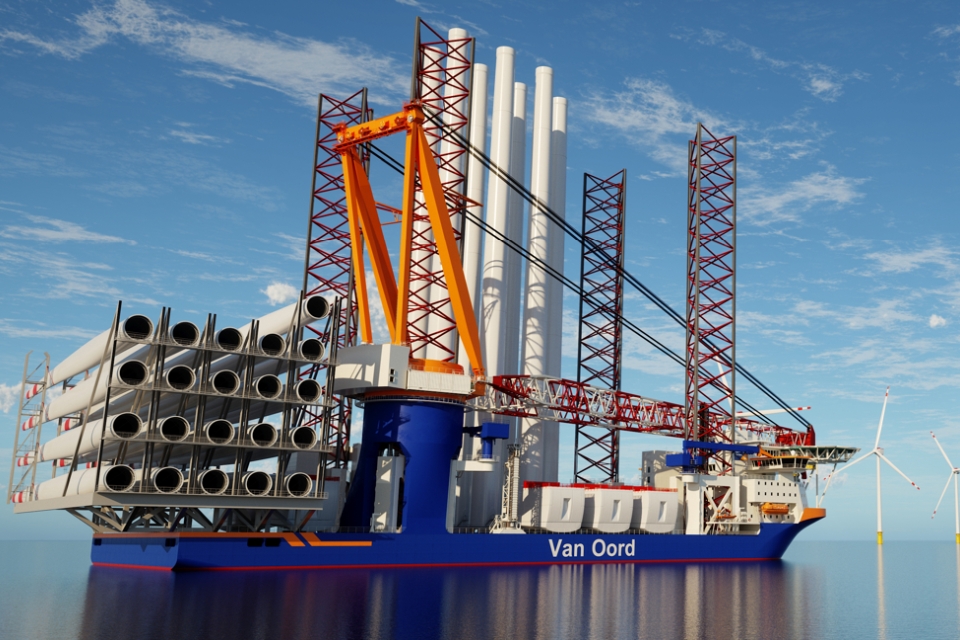Ecowende and Van Oord will collaborate on the construction of the offshore wind farm on Hollandse Kust (west) lot VI. This will be the most ecological wind farm to date, with minimal impact on the natural habitat of birds, bats and marine mammals, and with a thriving underwater world.
The aim is to enable the development of offshore wind farms with a net-positive impact in the near future. The collaboration between the wind farm developer, a joint venture of Shell and Eneco, and Van Oord was announced at the “Van Oord & Energy Transition” masterclass, to mark the christening ceremony for Van Oord’s new cable-laying vessel Calypso and which took place on 8 September. Contract signing will take place later this year.
As Ecowende’s contractor, Van Oord will be responsible for transporting and installing the foundations. Van Oord will also design, procure and lay the connecting cables between the wind turbines. Finally, Van Oord will be handling the transportation and installation of the wind turbines at sea.
‘The fact that Van Oord has been involved in the construction of all the wind farms in the Dutch North Sea means we have built up a wealth of knowledge over the years,’ says Arnoud Kuis, managing director Van Oord Offshore Energy. ‘We are happy to be working with the Ecowende consortium to bring all our experience on innovative, ecological, nature-enhancing measures to bear for Hollandse Kust West.’
Also read: VIDEO: Van Oord christens two new fleet additions in one day
Within the ecological limits of the North Sea
Building a wind farm in harmony with nature is an important condition for eventually achieving the ambition of 70 GW of offshore wind energy by 2050, within the ecological limits of the North Sea. Besides reducing the negative impact of an offshore wind farm, it is also necessary to implement ecological measures that can contribute to the development of wind farms with a net positive impact.
To that end, Ecowende will implement various innovations, large-scale mitigation and stimulation ecological measures and an extensive monitoring and research programme above and below the water. For Van Oord, this also means a different approach to previous wind farms.
Kuis: ‘In building the Ecowende wind farm, we are applying quieter installation techniques. The purpose being that this park and future parks can be built under stricter permit conditions. Van Oord is also laying various types of nature-friendly rubble around the foundations. Moreover, reducing the footprint (CO2 and nitrogen) during the construction phase is being given maximum attention. Van Oord is investing heavily in installation vessels using new fuels, to make the industry even more sustainable. The yet-to-be-built installation vessel Boreas, which can operate on methanol, will be delivered in 2025. Ecowende will be one of the first projects of this green giant.’
Also read: Shell and Eneco win bid to develop 760-MW Dutch offshore wind farm
Filling knowledge gaps
Ecowende will monitor, investigate and adjust the effectiveness of this approach with various innovations and technologies.
‘We take measures that have an immediate impact, but also many measures intended to try out new methods and fill knowledge gaps. We do not yet have all the knowledge on the effects of wind farms on nature. Precisely this knowledge is indispensable if we in the Netherlands want to grow responsibly in offshore wind energy and be an example for the rest of the world,’ says Folkert Visser, CEO and Project Director of Ecowende.
Picture: Van Oord’s Boreas, which will be able to operate on methanol.
Also read: VIDEO: How Van Oord lays offshore cables with the Calypso








